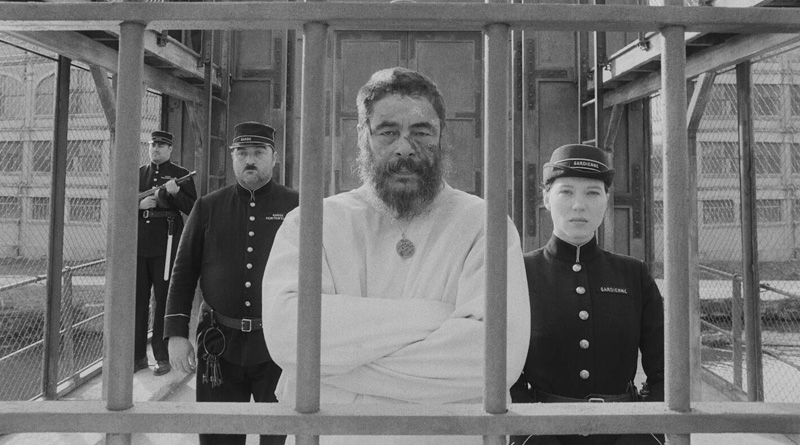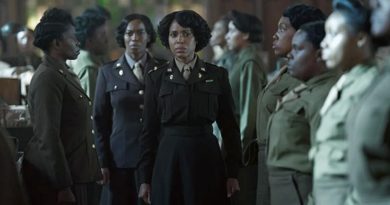The French Dispatch (2021) Review
The last time we see Wes Anderson direct a feature film, it turns out to be a visually captivating stop-motion animation called Isle of Dogs in 2018. His latest film marks Anderson’s return to the live-action feature in seven years since The Grand Budapest Hotel in 2014 sees the director pays a quirky homage to old-school journalism. The title — The French Dispatch — refers to the journal of a Sunday supplement of the Liberty, Kansas Evening Sun newspaper. As the film begins, we learn that the titular journal is founded by editor Arthur Howitzer, Jr. (Bill Murray, in his usual deadpan best) and the publication company is based in the fictional French city of Ennui-sur-Blasé.
Told in an anthology form, The French Dispatch covers three major segments, beginning with “The Concrete Masterpiece”, which takes place mostly in the confines of Ennui’s insane asylum. Here, we learn about a convicted killer, Moses Rosenthaler (Benicio del Toro) happens to be a talented artist as well. Over the course of his imprisonment, he chooses the prison guard Simone (Lea Seydoux) as his muse and his paintings have since attracted the attention of another inmate Julien Cadazio (Adrien Brody), who turns out to be an art dealer.
This whole segment alone, which is filmed mostly in pristine black and white, is easily the best part of the film. It has all the gleefully over-the-top and whimsical fun of a quintessential Wes Anderson film that hits the right spot, coupled with scene-stealing performances from Benicio del Toro, Adrien Brody and to a certain extent, Lea Seydoux. The latter’s icy demeanour is at least put into better use than the one she played in the surprisingly dull No Time to Die. Not to mention Tilda Swinton’s spot-on performance as the art critic and lecturer J.K.L. Berensen.

The rest of the segments, however, are a mixed bag. The second one titled “Revisions to a Manifesto” follows a journalist named Lucinda Krementz (Frances McDormand) covering political news on Zeffirelli B. (Timothee Chamalet), a young radical who led the student protests in Ennui. She also ends up having an affair with him and even helps him to proofread his manifesto. I find the second segment is rather weak in its execution while the political jokes are pretty much a hit-and-miss affair. The only positive exception in this particular segment is McDormand and Chamalet’s decent performances.
Moving on to the third and final segment is “The Private Dining Room of a Police Commissioner” — another uneven story about Roebuck Wright (Jeffrey Wright), who is a food writer covering a chef (Steve Park’s Lieutenant Nescaffier). The segment also involves some complications in between involving the kidnapping of the police commissaire’s (Mathieu Amalric) young son, Gigi (Winsen Ait Hellal). If there’s anything noteworthy about this segment, I sure do enjoy the three-minute hilarious, yet exciting car chase sequence filmed in a Tintin-style of 2D animation.
Anderson’s overall decision of vignette-style storytelling lacks narrative coherence, where certain scenes tend to be either sluggish or too detached. But one thing is for sure, he never lost his touch when comes to his signature visual style. The French Dispatch looks visually gorgeous regardless of the symmetrical background, pastel-hued colour palette and costume design. Each scene is meticulously shot like a painting or a wallpaper, thanks to his distinct camera compositions. Come Oscar season, it would be a crime for the Academy not to at least nominate The French Dispatch in the technical categories.





